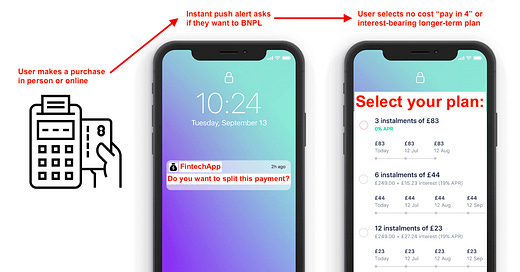How Card Issuers Can Make BNPL Work
Goldman Buys GreenSky, CFPB Warns on ISAs, Another BAML Overdraft Alternative
Hey all, Jason here.
With the last few days of summer slipping away, you know what that means: pumpkin spice latte season! (Just kidding, that started a month ago.)
If there is one thing I am looking forward to this fall, it’s the return of in-person conferences — starting with Money2020 Europe this week. Hosted in Amsterdam, how could I not attend? If yo…



